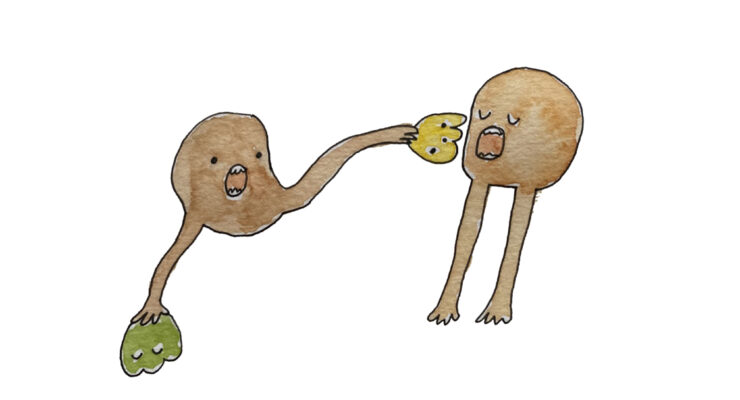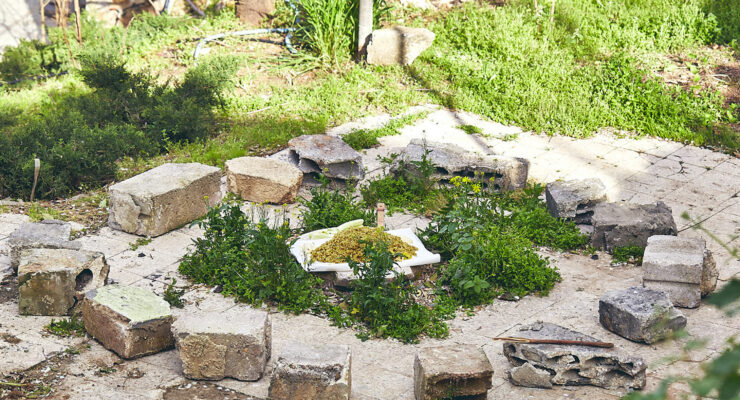Food: Bigger than the Plate
If someone would ask us to think about food, what pops into our minds is probably something linked to the moment of eating–either the pleasure of sharing a meal, or simply something that allows us to subsist. Food is something we put into our body every day, but even if we perhaps don’t realize it, our relationship with it goes way beyond just being a need or the mere action of eating. As the new exhibition 'Food: Bigger than the Plate' at the V&A in London, co-curated by Catherine Flood and May Rosenthal Sloan aims to prove, "What we eat is one of the most important decisions we make every day."
Are we aware of what we are inserting into our bodies, where it is coming from and the implications of our consumption?
Food does more than just nourish us: it impacts politics, culture, the environment, and goes beyond consumption—every bite we ingest is a decision we make and it has an impact on our planet and ourselves. This is exactly what the powerful curatorial work of Catherine Flood and May Rosenthal Sloan aims to show: the complexity of a food system that we are all a part of, and the communal choices we can make to reshape our food future.
Composting, Farming, Trading, Eating–four chapters guide the visitors in the exhibition and underline how we are already active participants in giving shape to the present and future of food. As we enter the exhibition, we feel a part of a cycle: and we actually are.
In the first chapter, we face the fact that as consumers, we are producers as well: the by-products of the food production system, leftover food, what we produce as waste from our body. What if we could (re-)use those materials in the production of other goods and objects? At the same time, as consumers, we sometimes don’t know what arrives on our plate, where it has been produced and how far it has travelled. Farming, the second chapter of the show, wants to shorten the distance between us and what comes to our plate, pushing the production companies to be more transparent with their processes. The last chapter, eating, is an ode to what eating in the present and future (could) look like, from new eating tools to approaching food in more engaging ways.
"The show does not want to assign guilt, nor does it impose unique solutions. Rather, it illustrates what the future of food could be."
The show does not want to assign guilt, nor does it impose unique solutions, rather illustrate what the future of food could be. 70 artists, designers, scientists, activists and architects investigate and reflect on the same topic. The diversity and richness of the projects shows how the topic of food can be tackled from many different angles and approaches: from speculative projects to already developed solutions.
The installation ‘Urban Mushroom Farm’ by GroCycle shows the entire cycle of recycling and producing: left-over coffee grounds provided by the V&A Café are used to grow mushrooms inside the exhibition. The mushrooms, once grown, will be harvested and served to the café guests.
The Center for Genomic Gastronomy’s ‘Loci Food Lab’ serves ‘bite-sized bioregionalism’ to the visitors: after choosing what values are important to one’s person, the visitor will get to taste a personalized bite based on available ingredients. The project debates what the future possibilities of food in a given region could be.
Planetary Community Chicken © Koen Vanmechelen

Installation image © Victoria and Albert Museum, London

Designers have a crucial role in reshaping the way we know and perceive food systems, and more importantly, we can influence consumers’ habits. The way we perceive food through the experiential moment is just one of the many sides of what design and food design is.
Fernando Laposse’s project ‘Totomoxtle’ shows how, as designers, we can play a determinant role in reshaping the present and future of food.

Fernando Laposse, Totomoxtle. Installation image at FOOD Bigger than the Plate at V&A © the designer. Photo Victoria and Albert Museum, London
‘Totomoxtle’ is a new material created from the husks of heirloom corn, revealing the diversity and the beautiful palette of colors that are borne from 60 old types of Mexican corn. But the piece exhibited is just the tip of the iceberg: the project shows how many factors are involved when talking about ‘just’ corn, from biodiversity to supporting local communities.
Through the creation of a new craft, Laposse’s life-long project reintroduces near-extinct Mexican traditional agricultural practices—for decades, the industrialization of food production and the introduction of genetically modified types of corn has robbed Mexicans of this practice. The project started in 2015 because of a personal connection to the place, and the realization by the designer of how much those people have lost: heritage, culture, employment.
“It was not easy: you cannot just go there and reintroduce the seeds of old corn. I had to learn about the land and how hard it is to be a farmer. Furthermore, as a designer, I had to adopt an approach of a story teller, in order to be able to share the story of this place and create empathy and human relations,” Laposse says.
One of the important aspects of the project, Laposse told us, was understanding, and not underestimating, the real risks of the project that could impact a farmer’s life. Therefore what was crucial to the project, Laposse continued, was to win the Future Food Design Award in 2017. This gave him the economical possibility to start working with a piece of land, to hire people and to get the attention of the seed bank that could provide the knowledge and the seeds needed.
In this sense, design has the power to connect different actors, combining the forces and creating a system that can lead to real changes. Moreover, Laposse’s project reminds us how real change takes time.
“We need to slow down, as consumers, as producers and as designers. If we are in first-person-producing and fast-publishing projects, what is the consumer getting from it?” Laposse asks.
There is an urgency for designers to start tackling themes regarding food, creating projects that go beyond what we all know. Food design, if we want to call it so, should open up to projects that create alternatives, and open up to possibilities that can really work. They should inspire people and be an example for others, leading to improvement of the quality of our lives and the future of food. ‘Food: bigger than the plate’ managed to show us that this is possible.
The exhibition will continue running until October 20th at V&A in London.
–

Article by food designer Giulia Soldati, founder of Contatto Experience.











